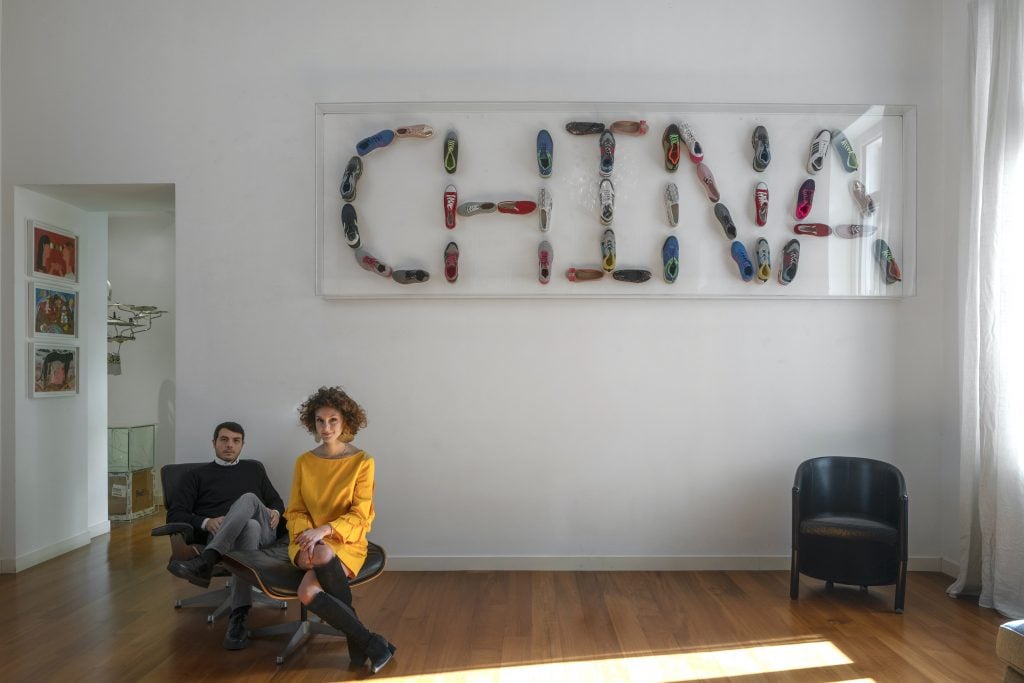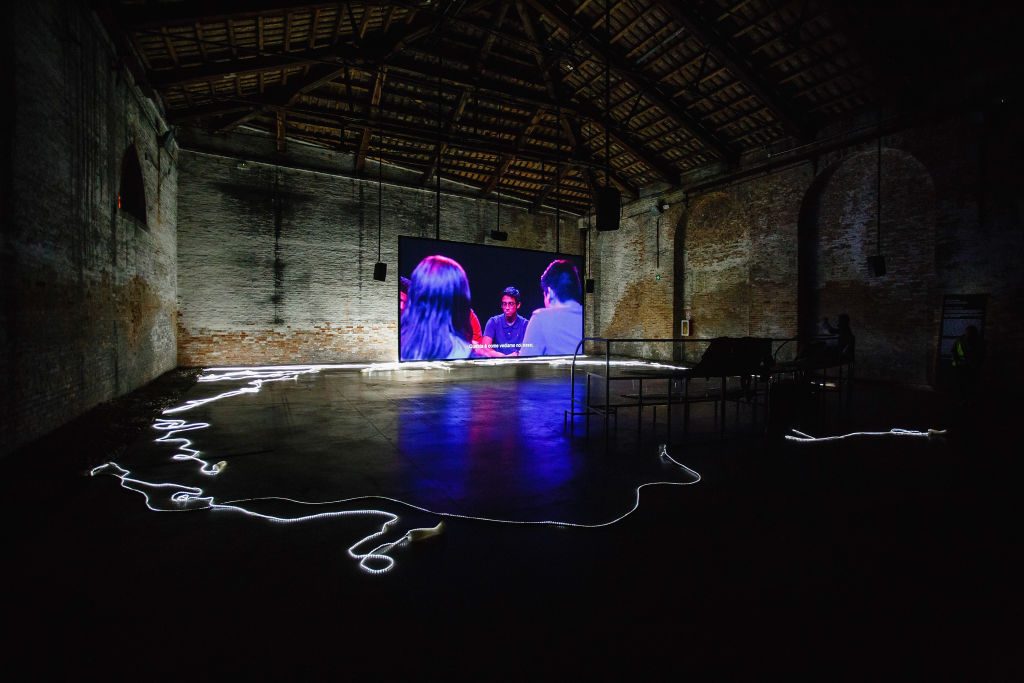Art Collectors
What I Buy and Why: Italian Collector Sveva D’Antonio on Shopping at the Venice Biennale, and Why She Loves ‘Impossible’ Art
The collector and her husband, Francesco Taurisano, are the brains behind the Collezione Taurisano in Naples.

The collector and her husband, Francesco Taurisano, are the brains behind the Collezione Taurisano in Naples.

Italian collector Sveva D’Antonio follows the signs.
From the first work of art she bought to the most recent addition to her and her husband’s now 400-work collection, D’Antonio lets her sharp instinct for the contemporary steer her.
D’Antonio is a former gallerist and with her husband, Francesco Taurisano, she presides over an enviable private collection in Naples. The couple built the Collezione Taurisano from foundations begun by Francesco’s father in the 1970s, and it now contains key contemporary works by artists including Lawrence Abu Hamdan and Adelita Husni-Bey, which grapple with the most pertinent social issues facing the world today.
In a normal year, the couple would be traveling the world searching for additions to their collection, but when we caught up with D’Antonio she was at their apartment in Naples. She spoke to Artnet News about the artists on her radar, that time she bought art from the Italian pavilion in Venice, and why she has a bone to pick with the Louvre.
What was your first purchase (and how much did you pay for it)?
Our first purchase was a 2014 photo by Leigh Ledare, Charlotte. It’s a nude portrait of the artist’s mother, embellished with crayon. We bought it during the Code Art Fair in Copenhagen, from Pilar Corrias gallery. It was the last edition of the series so we felt it was a sign that we couldn’t miss the opportunity. If you are afraid of losing something it means you care and you give meaning to it. So, we didn’t negotiate about the price, which was quite high, but still reasonable given the artist’s practice.
What was your most recent purchase?
An astonishing painting by Dominique Fung, who works with Nicodim Gallery in LA. She reminds me of the chiaroscuro of Caravaggio—there is a lot of drama in treating the light and the shadows. We love works that bring you to another level of understanding, to a mysterious universe where reality and dream are melt together in a fascinating composition. Fung’s composition is just this mix of dream and reality and we really love it.
Which works or artists are you hoping to add to your collection this year?
Emmanuel Taku, who is attending the Noldor Residency directed by the visionary Joseph Awuah-Darko in Ghana, and Mosie Romney, a queer artist represented by Nicodim Gallery.

Adelita Husni-Bey, The Reading (2017). Installation view of the Italian pavilion at the 2017 Venice Biennale. Photo by Awakening/Getty Images.
What is the most expensive work of art that you own?
One of the most expensive is Adelita Husni-Bey’s entire installation for the Italian Pavilion at the Venice Biennale. That edition of the Italian pavilion was curated by Cecilia Alemani and the title was the “The Magic World.” Adelita was presenting a video installation entitled The Reading. The video investigates our future and specifically explores how the new generation is dealing with it. During the video and in the installation you feel the mysticism, but at the same time the disillusionment that these teenagers are experiencing in a world to which they do not feel connected anymore.
Where do you buy art most frequently?
Galleries, most of the time. We strongly believe that collecting, now more than ever, is a big responsibility. Therefore we try to support the system as it is structured. We trust the work of galleries and we are convinced that artists should rely on them, and, of course, that galleries should somehow guarantee a stable career for the artists.
Is there a work you regret purchasing?
Actually, we have no regrets. Every choice we make, every new work that enters our collection is the result of a process. A process of deep understanding of the work and of the artist’s universe.
What work do you have hanging above your sofa? What about in your bathroom?
Above the sofa is an installation by Jota Castro titled China. The word “China” is made from shoes from the Chinese market in Naples. It’s a strong statement about our current economy with a sad reflection about the loss of Europe against China and all the new emerging countries. We have no works in the bathroom, but we do have a lot in our bedroom and all around our apartment. There is no place for art in the bathroom, it’s the only room where we have our intimacy without being observed by one of our pieces.
What is the most impractical work of art you own?
Quite a few actually. For a couple of years, our motto seemed to be, “if it’s not impossible we don’t buy it.” I am exaggerating, but still I can count more than five impossible works in our collection. We have an audio installation by Lawrence Abu Hamdan (the same one is in MoMA’s collection), a video installation by Ahmet Öğüt, a crazy laser installation by Michael E. Smith, a 3D video work by Hayoun Kwon, and I could go on.

Hayoun Kwon, 489 Years (2015). Virtual reality video installation. Courtesy of Collezione Taurisano.
What work do you wish you had bought when you had the chance?
Hans Haacke’s Shapolsky et al. Manhattan Real Estate Holdings, a Real-Time Social System, as of May 1, 1971 (1971). A landmark work of institutional critique, Haacke’s work chronicles the fraudulent activities of one of New York City’s largest slumlords over the course of two decades. Shapolsky et al. was to be part of the artist’s solo exhibition at the Guggenheim Museum in the spring of 1971, but the show was cancelled six weeks before its scheduled opening.
If you could steal one work of art without getting caught, what would it be?
The Mona Lisa by Leonardo Da Vinci. It’s funny because thieves have been caught trying to steal it several times. Somehow, Mona Lisa belongs to the Louvre even though we, as Italians, would love to have it back here.